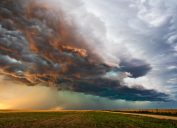33 Insane Facts About Lightning Strikes
These flashes of info will illuminate your mind.

For nearly 3,000 years, we've been fascinated by the mesmerizing qualities of lightning. "It was the magic fire from the sky that man captured and used to keep warm at night. It kept the savage animals away," according to the meteorologists at the National Weather Service. "As primitive man sought answers about the natural world, lightning became a part of his superstitions, his myths, and his early religions."
Our collective fascination with Zeus' magic weapon has never waned. So, if you're interested in learning even more about lightning—from its spectacular temperatures to its sheer force and power—read on for 33 lightning facts you will most definitely find striking.
1
Lightning creates heat hotter than the sun.
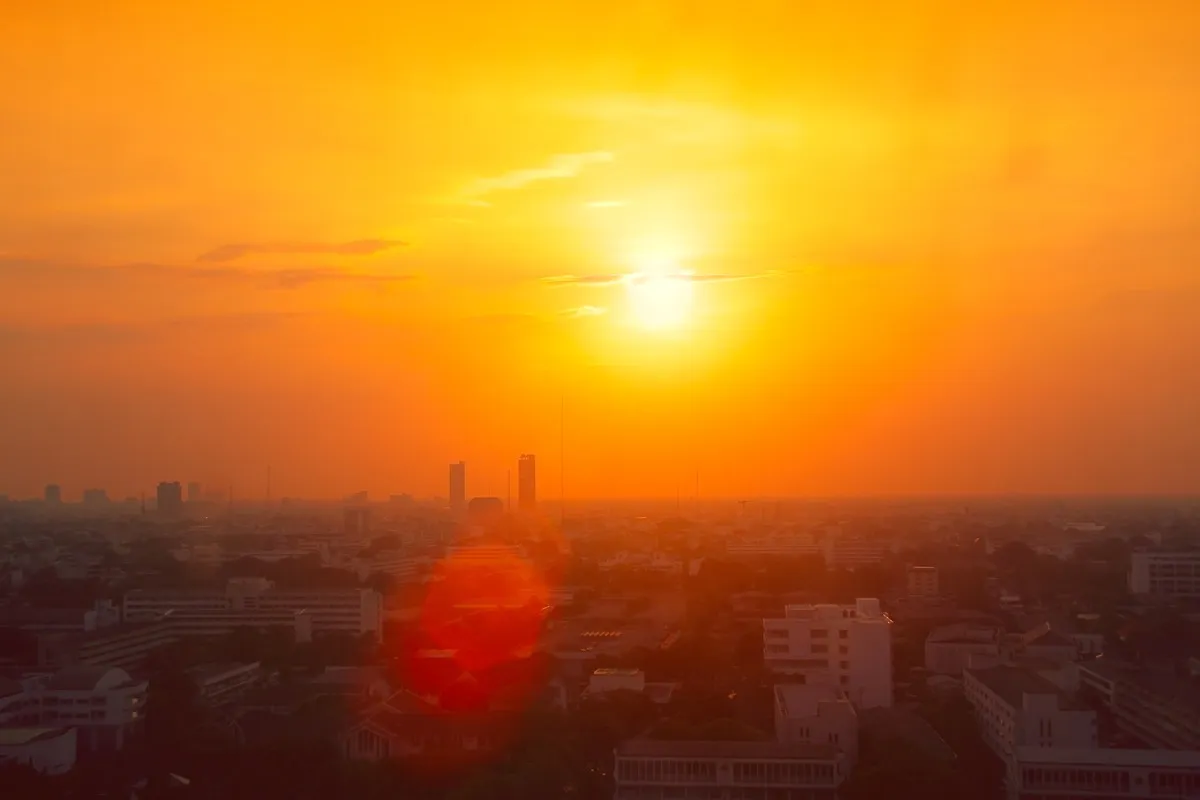
Though predictions range, experts say that can be as hot as 50,000 degrees Fahrenheit. If that's hard to imagine, allow us to put it in context: That's three times hotter than the surface of the sun. No wonder any water in lightning's path is immediately vaporized.
2
Technically, lighting itself doesn't have a temperature.

Allow us to explain that last fact. Technically, those 50,000 degrees are actually the temperature of the air or other materials as the lightning passes through it. The bolt itself is a movement of electrical charges, and for that reason, it does not actually have a temperature itself.
3
Lightning can strike the same place twice—or more!
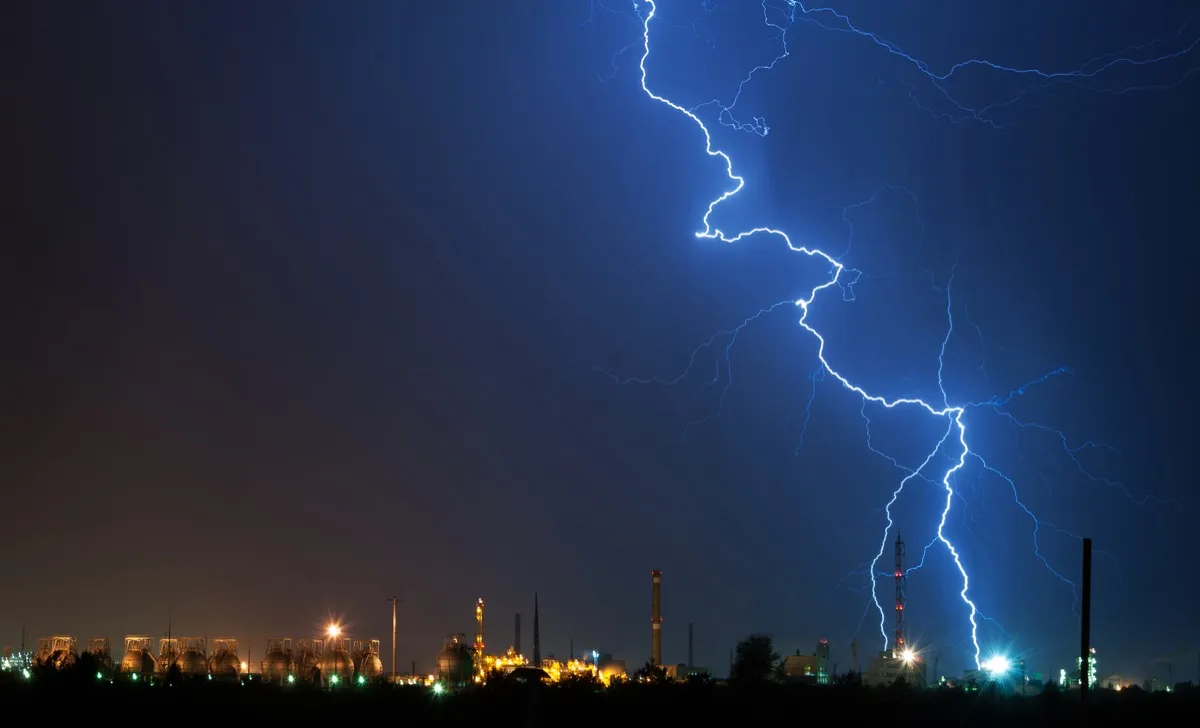
It's a myth that lightning never strikes the same place twice. Not only that, but some places (like tall buildings or areas with particularly conducive topography) can see dozens or even hundreds of lightning strikes. For instance, the Empire State Building is reportedly struck by lightning roughly 23 times per year.
4
Lightning also strikes multiple places at once.
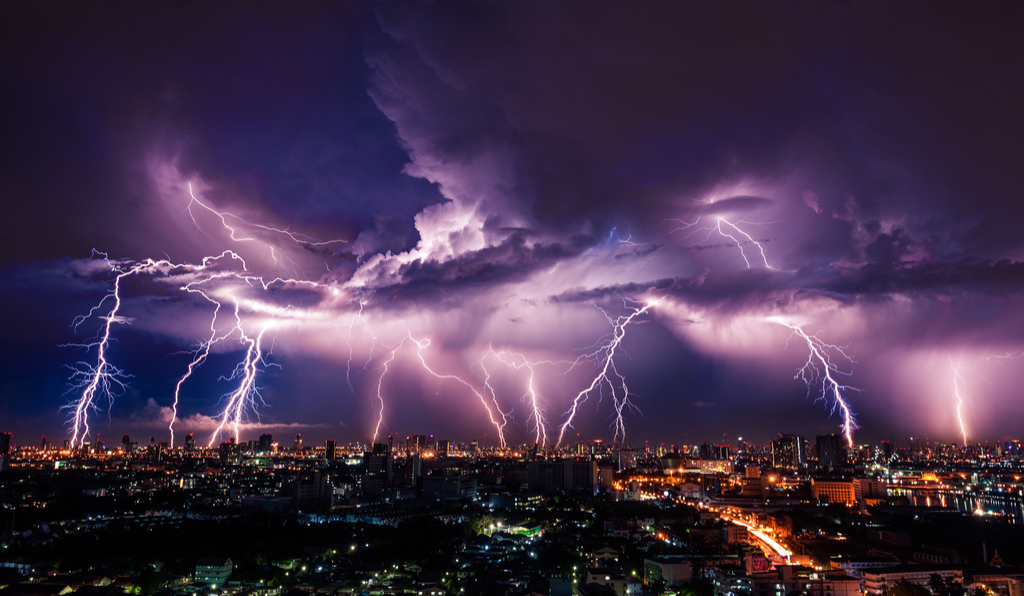
Not only does it strike the same places more than once, but also a single lightning bolt can strike more than one place at the same time. Double—or even triple—lightning strikes are not uncommon. For example, a couple years ago, one videographer recorded a single lightning strike hitting three of Chicago's tallest buildings: the Willis Tower, Trump Tower, and the John Hancock Building.
5
Lightning bolts are not very wide.

Photographs seem to indicate that the "channel diameter" of lightning bolts averages between two and seven inches. But researchers who examined melted metal locations where a bolt has hit believe they're closer to a just about an inch in diameter.
6
Lighting can be up to 90 miles long.

Lightning researcher Martin Uman has observed lightning channels as long as 90 miles.
7
Cameras aren't actually effective at capturing lightning.

Something as short-lived as a lightning bolt can be difficult to measure. For example, have you ever seen lightning without clouds? Probably not.
That's because, though photos can be helpful in determining the general size of a lightning bolt, they don't capture bolts inside the clouds. As a result, scientists consider photography to be one of the lesser-effective means for measuring lightning.
8
Radar is a good way to measure a lightning bolt.
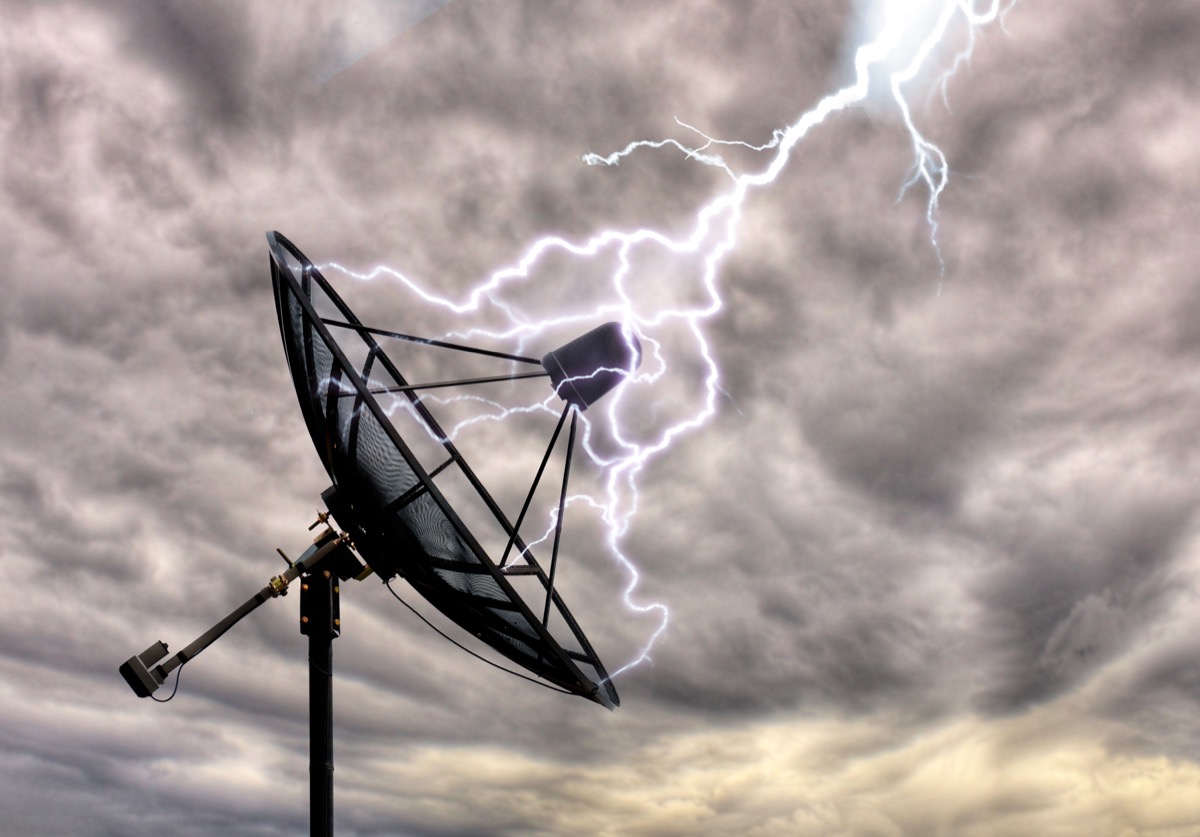
As Uman explains, a radar set can send out "electromagnetic pulses, which are reflected back by certain objects (e.g. metallic airplanes)." The pulses travel at 186,000 miles per second. So measuring the time that elapses between the emission of a pulse and when its reflection is received allows for the distance to be measured.
9
Florida experiences more lightning than any other U.S. state.

Of the top 15 U.S. counties with the most lightning strikes in 2018, 14 were in Florida. Thanks to its geography—bordered by ocean on three sides in a subtropical climate—you'll find almost daily thunderstorms in some part of the state. The most-struck part? The aptly named "Lightning Alley," between Tampa and Orlando.
10
But Venezuela experiences more lightning than anywhere on Earth.

In particular, Lake Maracaibo, right off the Caribbean Sea, holds the record for "highest concentration of lightning," according to The Guinness Book of World Records. There, you'll find the Catatumbo lightning—colloquially, and terrifyingly, known as the "everlasting storm"—a weather phenomenon that averages about 260 storm days per year, 150 of which feature lightning. Sometimes, there are nearly 30 lightning flashes per minute.
So, why is this region so lightning-friendly? Scientists theorize that the air above the lake is particularly conductive due to the abundance of methane from oil fields—or perhaps it's due to some mysterious combination of topography and wind patterns. We only know one thing for certain: Don't bring your dog (unless you want to scare its fur off).
11
Thunder can't exist without lightning.

Most people talk about thunder and lightning as if they are two separate things, but in fact, they are just two features of the same phenomenon: Thunder is the sound of lighting. In other words, thunder is the noise created as air expands and contracts rapidly in the lightning's resonating tube (which one professor calls a "tubular drum").
12
Thunder can be heard as far as 10 miles from the lightning strike.

Part of the reason some people separate thunder and lightning is that it's possible to hear thunder from as far as 10 miles away from the lightning that caused it. Just because you don't see the lightning doesn't mean it's not there.
13
A lightning bolt can have up to a billion volts of electricity.
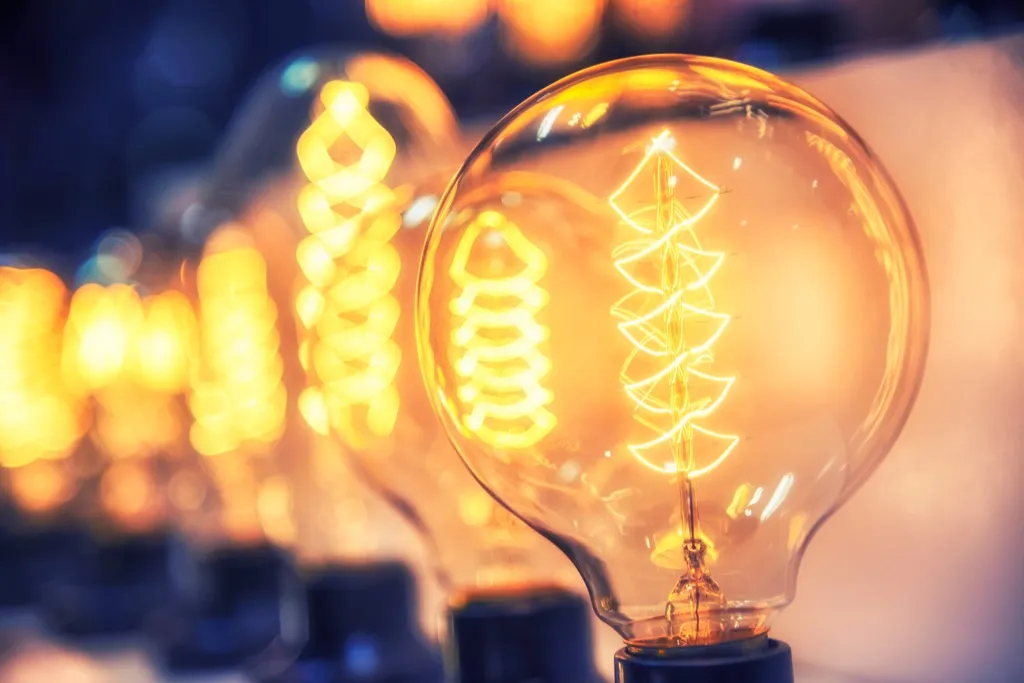
Yes, one billion with a "B." Put another way, that's about the same amount of power as 79.4 million car batteries or 666 million AA batteries.
14
Lightning kills 51 people on average in the United States each year.

That was the average for the years between 1984 and 2013, according to the National Weather Service.
But that number has been going down: 2017 saw a record for the fewest number of people killed by lightning in a year, with 16 killed. Last year, it ticked up slightly, with 20 fatalities, the second-lowest on record.
15
Lightning disproportionately kills the poor.
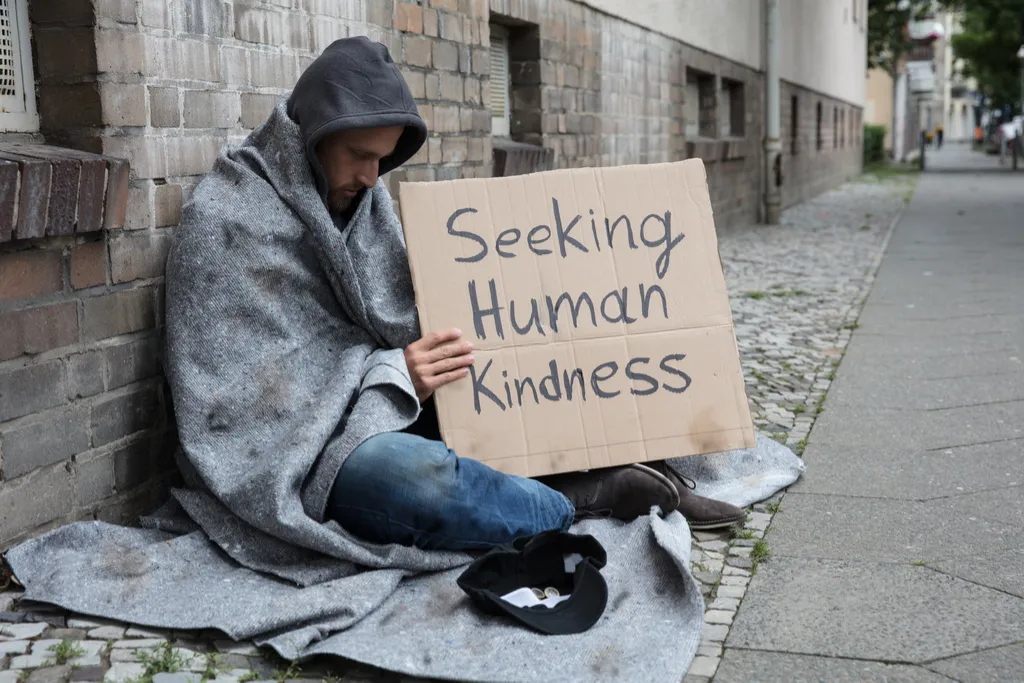
Lightning is responsible for an estimated 24,000 deaths throughout the world in a given year. Many of those are in poorer or more rural parts of the world. While the United States loses about 0.3 people per 1 million population, India loses 2 people per 1 million, Zimbabwe loses 20 per 1 million, and Malawi sees 84 people per million killed by lightning.
16
More than 1 billion lightning strikes hit Earth annually.
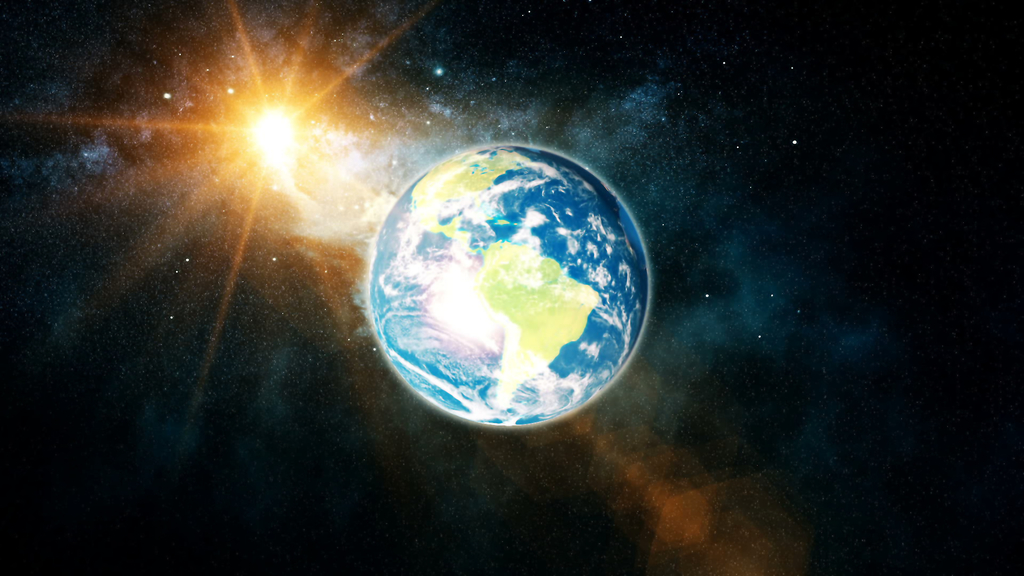
Yes, 24,000 annual deaths is a high number. But it's a bit smaller when you put it in perspective: The planet is hit by lightning an average of 1.4 billion times per year. If each of those hit a person, humanity would cease to exist in five years flat.
17
Lightning disproportionately kills men.

In the United States, at least, men are far more likely to be killed by lightning than women. According to the National Weather Service, 81 percent of the lightning-related fatalities between 2006 and 2013 were men.
18
Most lightning strike victims survive.

If you live in the United States, your chances of surviving a lightning strike are surprisingly high at about 90 percent. There are a few reasons why survival is so high, including that direct strikes are actually rare, that your body cuts off much of the current, and that CPR is a widely known skill and often quickly administered.
19
Lightning once destroyed a massive collection of Star Wars memorabilia.

Star Wars fanatic Graham Duck was once victim of a lightning strike that would've made Darth Vader jealous. When a bolt struck the roof of his house in northern England, a fire ignited in the attic, where he kept £20,000 of Star Wars toys and memorabilia. All the irreplaceable action figures and collectibles were destroyed. If there was ever a question that Force Lightning was a Dark Side power, this settles it.
20
Being struck by lightning gives you a rash.

The rash that lightning leaves behind on those it strikes is probably the least of victims' worries, but they are pretty gnarly. The tree-like red branching pattern—known as "Lichtenberg figures"—is caused by the electrical charge rupturing capillaries beneath the skin.
The rash is named for German physicist Professor Georg Lichtenberg, who discovered the pattern on electrically charged plates. They are sometimes also called "lightning flowers" or "skin feathering."
21
Lightning doesn't need rain.
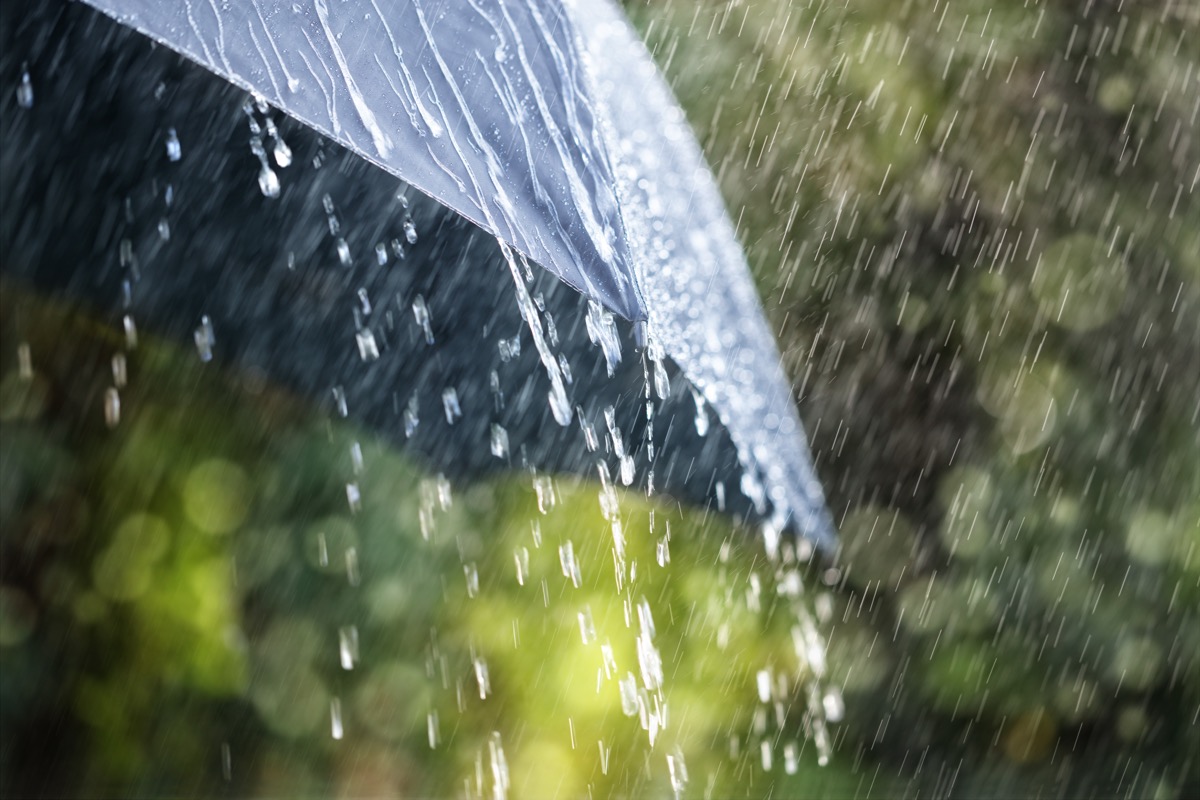
Though we usually associate lightning with rainy storms, the phenomenon does not actually need rain to occur. Dry lightning is something that happens in western states and can be a major cause of wildfires and other hazards.
22
There's something called "petrified lightning."
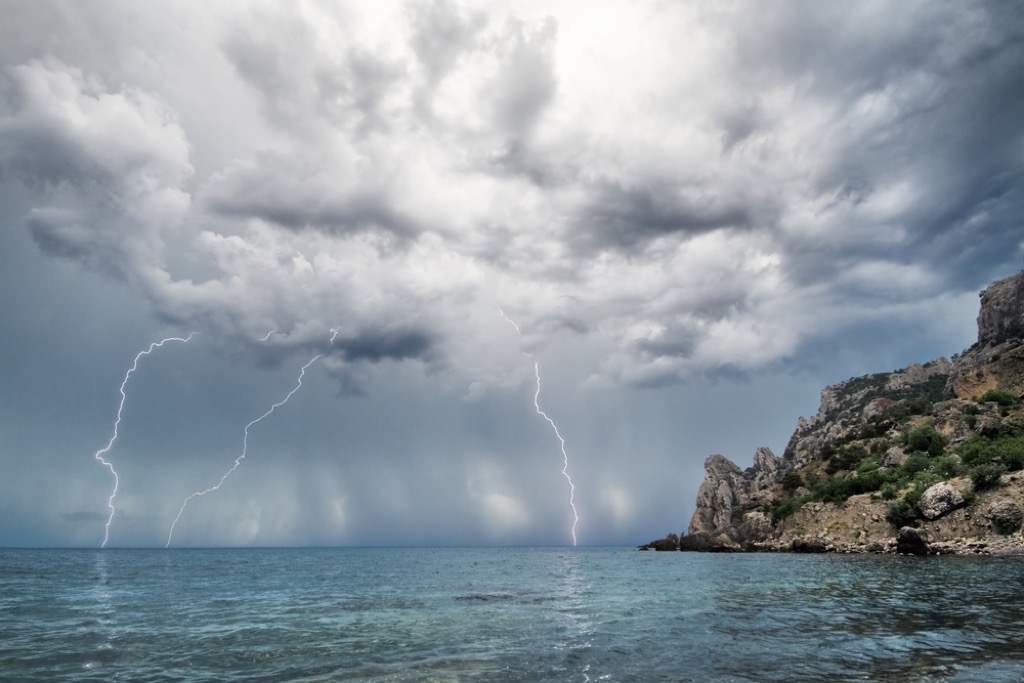
Sometimes lightning can be captured in a kind of frozen sand sculpture known as "petrified lightning." The conditions must be just right, but if the bolt strikes a sandy beach that's high in silica or quartz, the intense temperature can cause the sand to fuse into silica glass. It results in an impressive snapshot of the bolt that might be mistaken for a tree branch.
23
There's also "positive lightning."
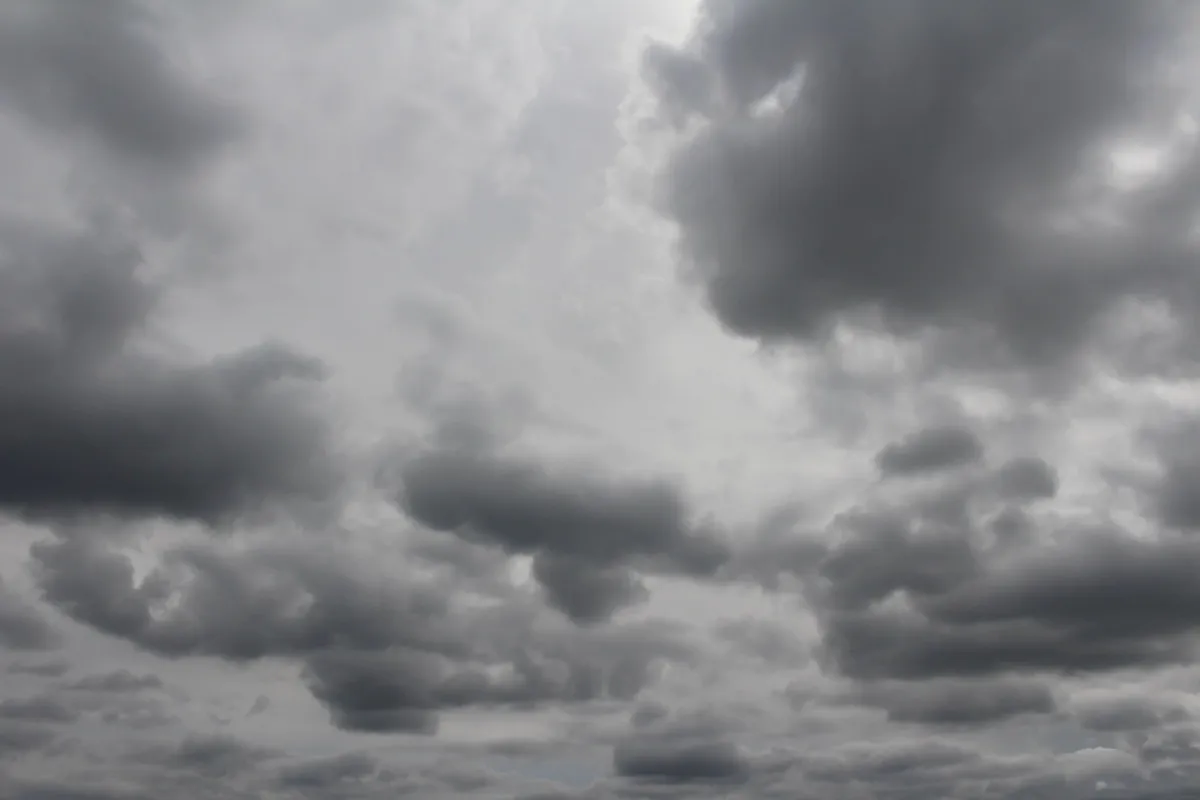
No, it's not some kind of lightning that's more optimistic than most. The term refers to a bolt that results from a positive charge building up at the top of a cloud. It doesn't usually happen unless there is a strong wind that moves a cloud's naturally-forming negative charge out of the way. That means the positive lightning generally hits the ground 20 to 30 miles away from its storm, often as the worst of the storm peters out.
24
And it's deadlier than normal (AKA negative) lightning.

A "negative bolt" of lighting—when a negative charge is transferred from a cloud to the ground—is by far the most common type of lightning. It typically produces 30,000 amps of electricity. Positive lightning produces 10 times that and is far more likely to kill anyone it strikes.
25
One bolt of lightning once killed 81 people.

On December 8, 1963, a lightning bolt hit the left wing of Pan American Flight 214, heading from Puerto Rico to Philadelphia. The bolt ignited the fuel stored in the plane's reserve tank, causing an explosion and part of the wing to separate from the plane. The whole thing came crashing down, and all 81 passengers were killed.
26
A man claimed lightning restored his sight.
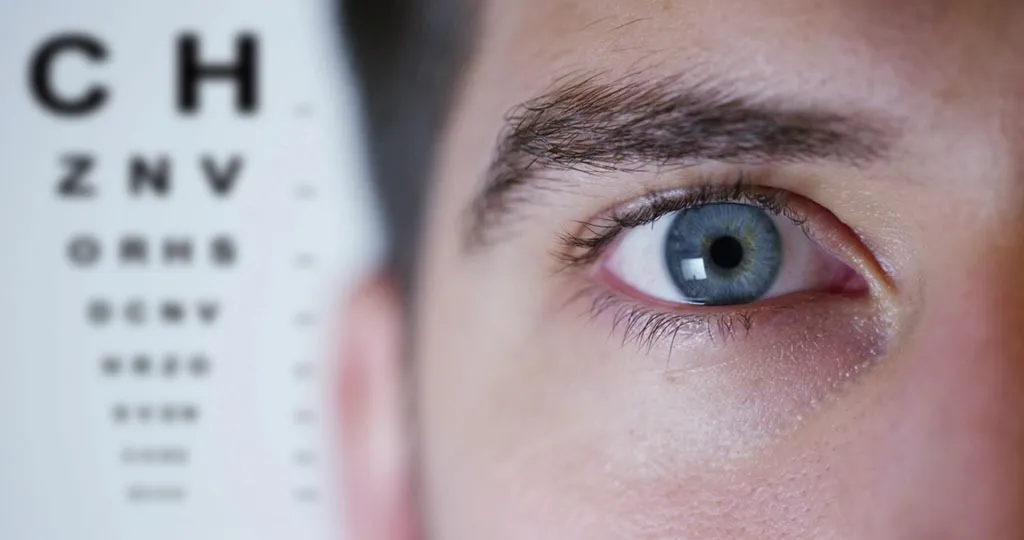
Edwin Robinson, a resident of Falmouth, Massachusetts, was blinded by a car accident in 1971. Then, he was struck by lightning in June 1980, knocking him unconscious for 20 minutes. Upon awaking, Robinson discovered that his sight had returned.
27
A park ranger has survived seven lightning strikes.

Park ranger Roy Sullivan holds the Guinness Record for being struck by lightning more than any other person. But while he proved to be a remarkable survivor after those seven strikes—and singlehandedly disproved that "lightning doesn't strike the same place twice"—Sullivan had his own demons to battle. He took his own life at the age of 71.
28
"Ball lightning" is real, but it's hard to prove.

A spherical ball of light, known as "ball lightning," has never been photographed, but has been "seen and described since antiquity," according to astronomy and physics professor Peter H. Handel of the University of Missouri at St. Louis.
It appears during thunderstorms for a few seconds, moving parallel to the planet and making occasional jumps. Handel says, "Sometimes it descends from the clouds, other times it suddenly materializes either indoors or outdoors or enters a room through a closed or open window, through thin nonmetallic walls or through the chimney."
29
Benjamin Franklin came up with early lightning protection.
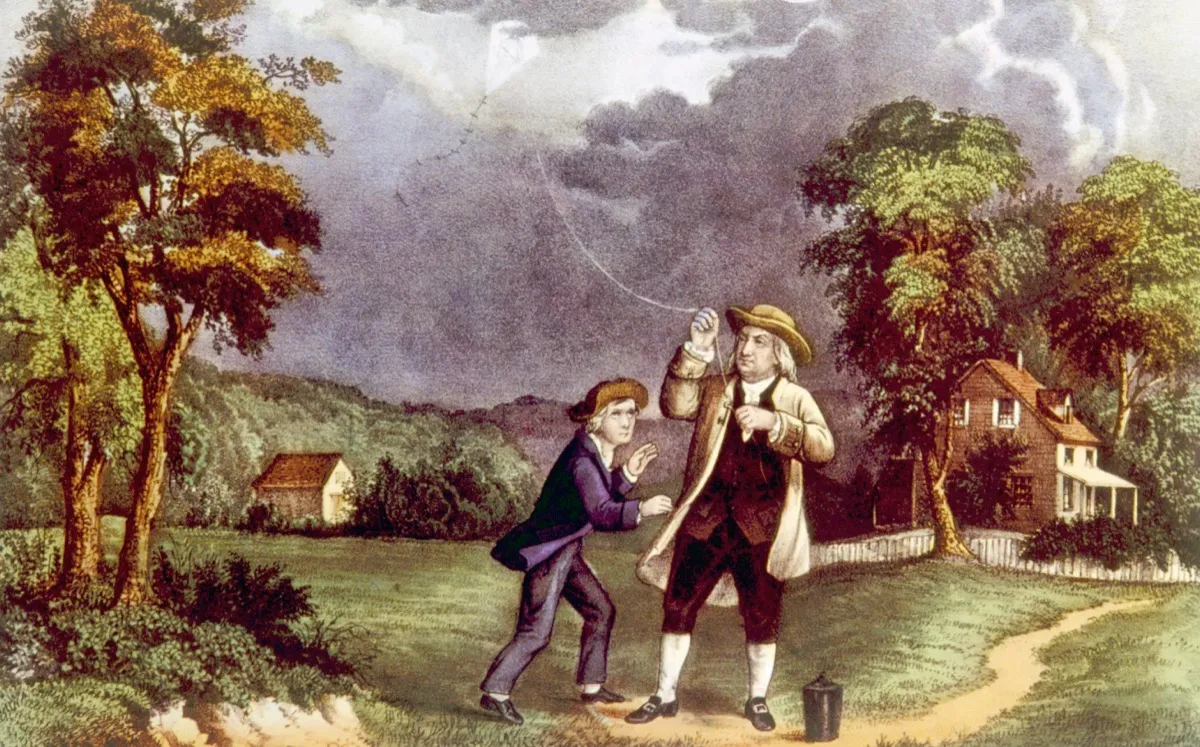
Though his "kite experiment" about the nature of electricity may or may not have actually happened, Franklin did come upon the idea of securing lightning rods to the tops of buildings in order to protect structures from the impact of lightning strikes. The Franklin lightning rod, he said, would prevent a house from being "damaged by lightning … passing thro the metal into the ground without hurting any thing."
30
An iPod saved a teenager who was struck by lightning.

A teenage girl struck by lightning in 2009 survived, thanks to her iPod. The gadget's wire diverted the 300,000-volt charge away from her vital organs. She suffered burns and was knocked unconscious, but lived to tell.
31
The study of lightning has a name.

It's known as "fulminology." Oh, and there's a term for fear of lightning, too: "astraphobia."
32
Lightning causes "red sprites."

With the appearance of a spooky red haze some 50 miles high in the air, this phenomenon, known as "red sprites," is caused by positive lightning.
As Popular Science explains, "The sprites' red color likely comes from those ions smashing into molecules in the air. Similar to the aurora, the charged particles excite nitrogen, hydrogen, and oxygen. The gases eventually settle down and release that energy, some of it in the form of pretty colors."
33
Lightning once took down a rocket.

The $78 million Atlas-Centaur 67 rocket, launched in poor weather conditions in March 1987, was struck by a lightning bolt 49 seconds after launch, causing its controls to fail and the rocket to start falling apart. The rocket's debris landed in the ocean and near the shore, where it burned holes. Luckily, it wasn't a manned vessel, so the disaster resulted in zero casualties. And for some more awesome science coverage, learn all about the 21 Mysteries About Space No One Can Explain.
To discover more amazing secrets about living your best life, click here to follow us on Instagram!



